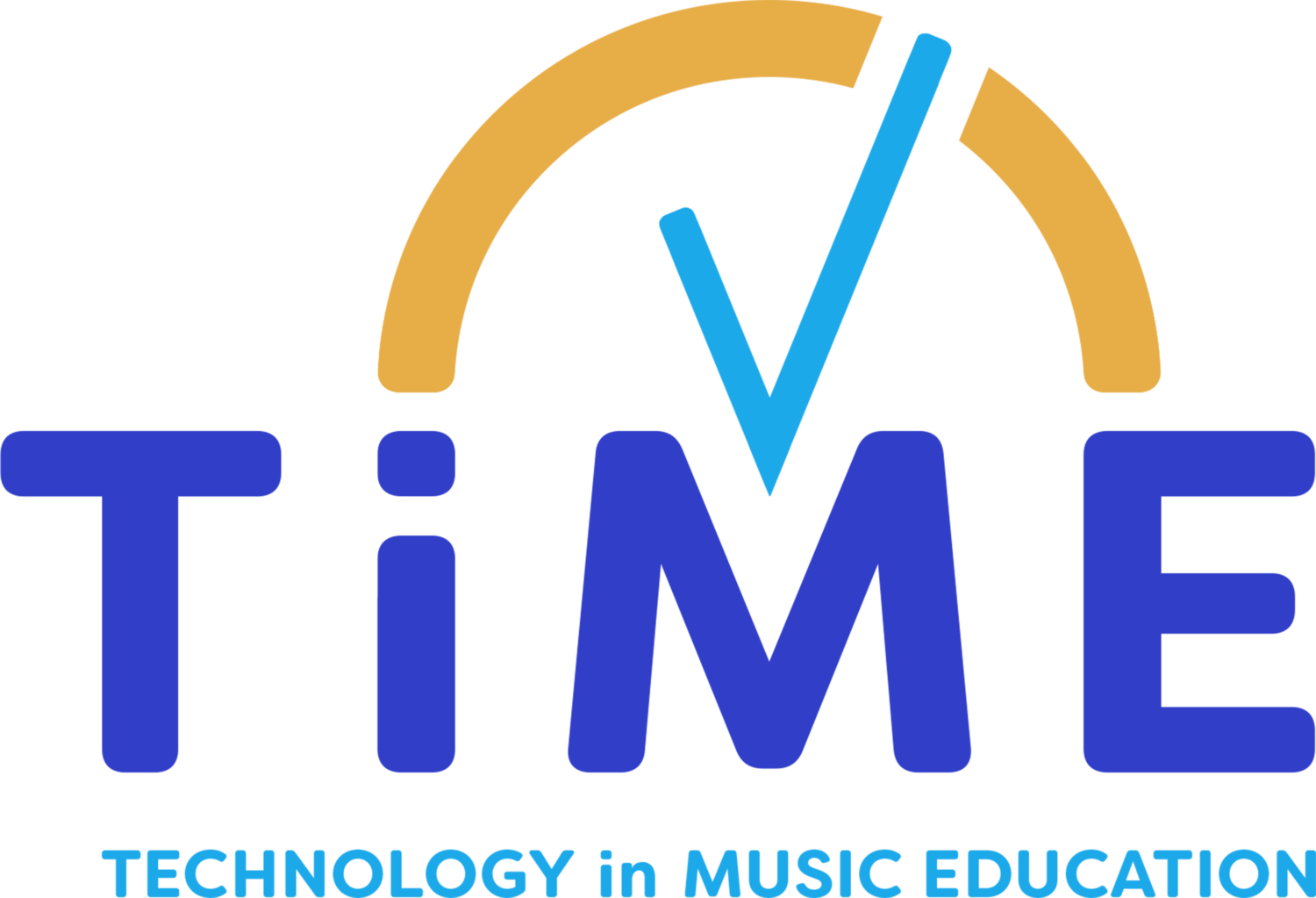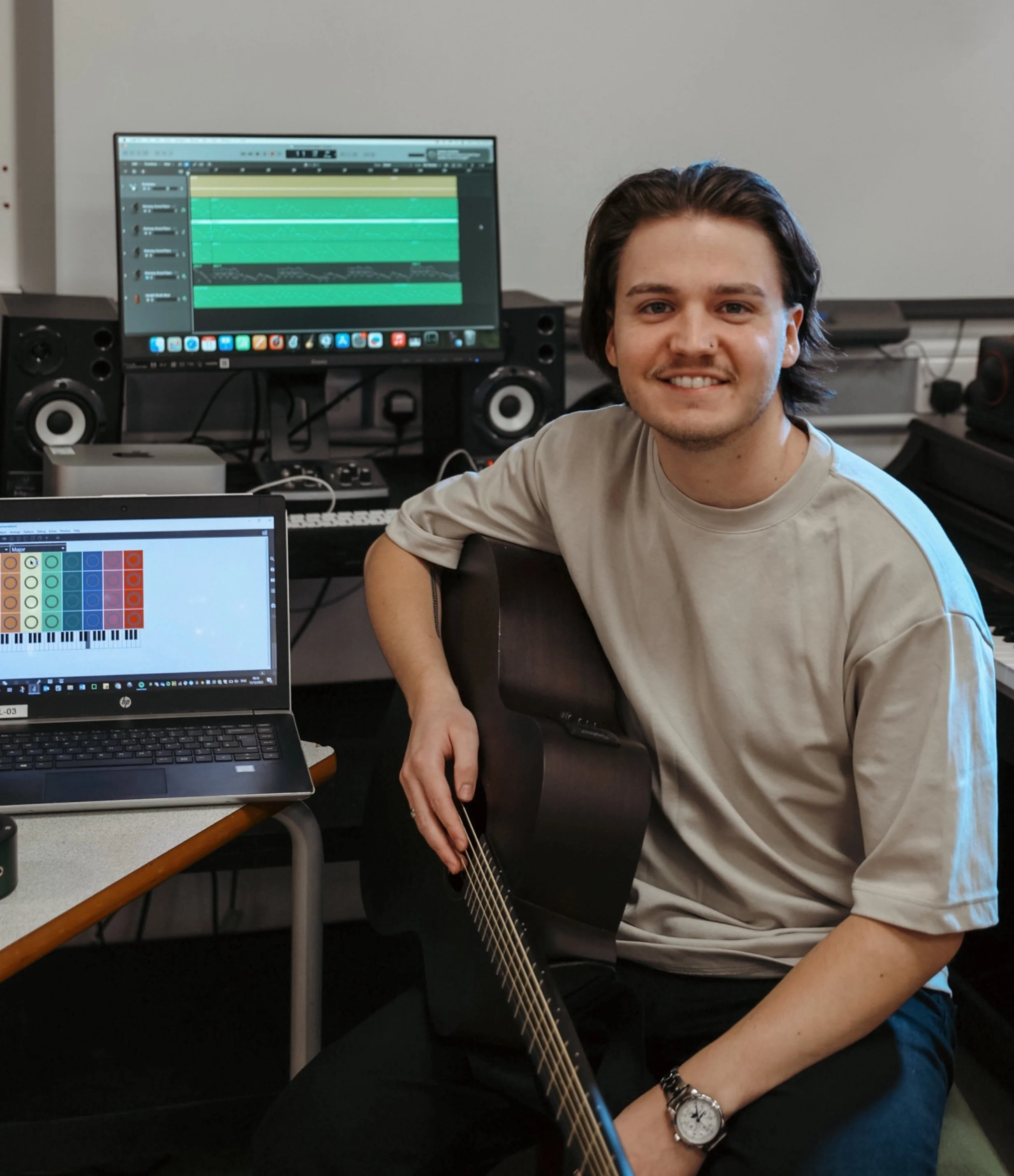Teaching with Music Technology: Jack Goode discusses the role of music technology in Special Education
Jack Goode is the music teacher at Oak Field School in the city of Nottingham. Oak Field is a co-ed school for children aged 3 to 19 years with special educational needs, including severe, profound and multiple learning difficulties (PMLD) and disabilities. He has been teaching here for the past five years and has a specialist background in music technology. Kate Rounding popped in to ask him a few questions about his teaching practices and how he uses music technology to engage learners:
KR. Why did you decide to become a music teacher at an SEN/D specialist school?
JG: In 2015, a friend recommended getting involved in teaching music at the Fundays Summer School at Oak Field. This was my first experience teaching music to children and young people with special needs and disabilities. I was amazed by their passion for music and witnessed the challenges they could face in making music themselves. I felt that I could make a difference in this with my knowledge of music technology. I continued to teach at the Summer School, then became a full-time music teacher at Oak Field School in 2018.
KR. Please can you tell me a bit more about the school?
JG: We have 166 students at Oak Field from ages 3-19. Their needs include Severe Learning Difficulties (SLD), Profound and Multiple Learning Difficulties (PMLD) and Complex Learning Difficulties and Disabilities (CLDD). There is one class of students with Autism Spectrum Disorder (ASD). We have also noticed that over time, the number of PMLD students has increased in recent years. A lot of these pupils also have more complex health needs.
KR. Did you do any specialist training to support you in teaching music?
JG: At first, I found accessing training relevant to me and my school very difficult. Everything seemed very mainstream focussed. I would come away from CPD having to try pretty hard to think of how taught strategies could be applied in my setting. Instead, the only way to get useful training was to contact music teachers from other special schools, visit them, and learn from their practice. That changed when I attended the Music Education Hubs East Midlands (MEHEM) conference in 2020. Finally, I could attend training relevant to special education and specific to music in special education! Since then, I have attended training provided by the Uprising! team led by Ben Sellers and Rosie Rushton. These opportunities to learn from others in similar settings have been transformative in my own practice. There is also a sense of community between those attending the Uprising! network meetings, which is vital in what can often be a solitary teacher role.
KR. What issues do you come across in your teaching?
JG: My biggest issue is enabling pupils to attend high-quality events outside of school. Transport and wheelchair access are huge challenges to overcome. We often resort to asking musicians and event organisers to come to us at the school to ensure that all of our students access similar opportunities. Finding experiences suitable for the pupils can also be challenging due to accessibility, relevance, or age-appropriacy.
KR. What music tech gear do you use and why?
JG: A good computer with a decent Digital Audio Workstation (DAW) is a must for me. To be able to capture, amplify, manipulate and play back pupils' vocalisations or instrument-playing can be a magical experience. It has also opened up opportunities for recording compositions and performances that would otherwise prove difficult.
KR. What is the most useful bit of gear?
JG: During our time with the Open Orchestras project, we had access to the Clarion, which is a fantastic piece of kit. So many pupils could access music-making through the Clarion, whether using it on our iPads, Interactive Whiteboards or eye-tracking software. I'm looking forward to the standalone version becoming available. I am also a big fan of Thumbjam on the iPad, which is great for exploring different instruments and scales. However, these pieces of technology are useless to pupils with hearing impairments if they cannot be properly amplified. With the Minirig Bluetooth speakers, our pupils can have their instrument amplified in a position that suits them, in some cases being placed on the body so they can feel the music they are making. The sound quality from the Minirigs is fantastic, and they have also passed the resilience tests that the pupils sometimes put them through!
KR. How have you been able to use your knowledge of music tech in your teaching?
JG: We are fortunate to have a Mac Studio in the music room. It has allowed me to capture some fantastic recordings of pupils' work on Logic Pro and to use a vast library of sounds and effects in lessons. I have also used Max MSP to create bespoke software for pupils to interact with sound. This includes a webcam-based game where a pupil's movement controls the playback of recorded music, generative music composition systems inspired by Brian Eno, and DJing software controlled by a gaming joystick and switches.
My most ambitious Max MSP project is a software instrument interface that uses a 4x8 grid of squares that correlates to four octaves of a scale of your choice. The software then assigns note colours to the squares, corresponding to the Chroma-Notes system used elsewhere in the school. The software then accepts input from a variety of accessible means (mouse, eyegaze, BIGtrack, etc) to play the notes into a virtual instrument/synthesiser.
The software was influenced by two of the most popular accessible musical instruments, the Thumbjam and the Clarion. The software takes the best aspects of both instruments (the playability of Thumbjam and the accessible input options and Chroma-Note system of the Clarion) to create something that pretty much all the pupils at Oak Field can access.
We also use Apollo Ensemble to create immersive environments that often factor in music-making. In a similar way to Max MSP, interfaces such as switches or Xbox controllers can be programmed to activate a sound, light or video effect.
KR. What are the most significant issues when using Music Tech?
JG: Setting up can take a long time, especially when equipment requires a Bluetooth connection or a longer signal path. It's not uncommon that a piece of equipment will cease to work mid-lesson, and I'll be left with the decision to either try to problem-solve frantically in front of 10 eagerly awaiting pupils and a handful of staff or ditch the tech and go to plan B. Part of this can be down to unstable connections or plain bad luck. However, it definitely helps if the equipment has a reasonably straightforward strategy for troubleshooting.
KR. Are there any ways in which you can monitor or track your student's musical progression?
JG: Progression in music is currently monitored against the Sounds of Intent framework by Adam Ockelford. This is the most effective assessment framework as it covers the musical abilities of everyone in the school, providing sufficient challenge for each individual and allowing for incremental progression towards targeted outcomes. Sounds of Intent also forms the basis of Trinity College London's Awards and Certificates in Music Development, which we now deliver in school. Previously, we struggled to find appropriate accreditation in the arts beyond the Arts Award and some Units from Cambridge Technical awards. Some music colleges were willing to make very reasonable adjustments to make their qualifications more accessible, but none were willing to create something that, from the ground up, would be accessible to the majority of our pupils.
KR. Can you link up with the local Music Hub? How has this worked?
JG: Our relationship with Nottingham Music Hub blossomed when we signed up to be one of Open Up Music's 'Open Orchestras' in 2021. We were tasked with setting up an inclusive orchestra with the help of Claire Dyer from the Music Hub, who joined us for one day a week. In 2022, Claire and I continued to build the Oak Field Orchestra and Choir. The Oak Field Orchestra and Choir performed with the Robin Hood Youth Orchestra at the Great Big Orchestra Experiment event and the Nottingham Albert Hall.
Claire and I have worked together to develop music provision within the school. We have delivered CPD workshops to teachers, and Claire also delivers whole-class music tuition alongside class teachers to provide them with CPD and ideas they can bring into their day-to-day teaching. We now lead three ensembles that merge to form the new Oak Field Orchestra. This allows the pupils to practically apply the musical skills they learn with friends from across different key stages and perform at various events throughout the school year.
KR. What improvements should manufacturers consider when building new adaptive instruments?
JG: In this setting, adaptive instruments are used by pupils with vastly different needs, often in the same lesson. Therefore, the adaptive instrument needs flexible parameters to ensure that each individual can get the best out of it. The instrument should be able to 'tune' into the user's needs, such as sensitivity and level of articulation. It is important to remember that whilst creating something easy to pick up and play, if the user cannot progress in their mastery of the instrument, that limits the scope drastically. The adaptations made to an instrument to reduce the challenges to music-making mustn't impede the user's freedom and the autonomy of their playing.
The instrument must mitigate the barriers/challenges to music-making the user faces while providing the opportunity for progression in technique and a certain level of control and articulation. It would be even better if a piece of technology could 'unlock' certain restrictions as the user became more proficient so that the learner can master specific aspects of the instrument before having access to further control and articulation.
The instruments must also demonstrate a high level of material resilience. Even when carefully looked after, heavy use and the odd accident can lead to rapid deterioration of instruments. Music technology can be a significant investment for schools, and to have these instruments break without simple methods to repair/replace components can be very off-putting.

